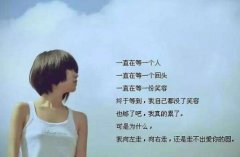2006-2013年高考英语四川卷(13)
37. The underlined word “mascot” in Paragraph 2 probably refers to ________.
A. a new type of butterfly B. an insect believed to bring good luck
C. a parade organized by Pacific Grove D. a special dress for children in Pacific Grove
38. What problem do Monarch butterflies face now?
A. New buildings take up their living space. B. There has been too much rain in recent years.
C. Their natural homes are destroyed by tourism. D. They have to travel a long distance to get home.
39. Where do Monarch butterflies start their trip to Pacific Grove?
A. From Central America. B. From the West Coast.
C. From California. D. From Mexico.
B
New Zealand
|
What can you see? Mountains, volcanoes, rivers, lakes, waterfalls, forests, beaches. Both islands are mountainous. In fact, only 30% of New Zealand is flat. |
The Maoris When the Maoris first arrived in New Zealand, they lived in villages and were excellent fishermen, hunters and farmers. About 50 years ago many Maoris started to live and work in the large cities and took jobs in government, industries, medicine and education. They are proud of their culture (文化) and are determined to keep many of the customs which are part of their way of life. |
|
|
Who can you meet? Most people live on North Island. Eighty-five percent of New Zealanders are “pakeha” (“white men”), which means their “great grandfathers” came from Europe. Ten percent are Maoris. The Maoris came to New Zealand from the Polynesian islands probably around the tenth century. The “pakeha” started to arrive in New Zealand from Europe about 200 years ago as farmers and traders. |
Fact box: New Zealand Position: South of the Equator(赤道); nearest neighbour: Australia, 1600 km away. Size: Two main islands — North Island and South Island: together they are 268.680 sq.km. Population: 4 million Capital: Wellington Languages: English and Maori |
A. 20% of the population being Maoris. B. Four million white people.
C. About 1600 km south of the Equator. D. Nearly 1/3 of the country being plains.
41. The country’s population is mainly made up of ________.
A. the white people and the Polynesians B. the white people and the “pakeha”
C. the Maoris and the white people D. the Maoris and the Polynesians
42. When did the white people begin to live in New Zealand?
A. 1000 years ago. B. 200 years ago. C. 85 years ago. D. 50 years ago.
43. What do the Maoris value most in life?
A. Living in small villages. B. Developing farming skills.
C. Keeping their own culture. D. Taking up government jobs.
C
My bookshelves are full of dust — and with good reason. When it comes to cleaning that part of my home, I suffer from the most serious case of avoidance (回避反应症).
The thing is this: when I do set out to clean and re-organize my books, which seldom happens, I place myself into a really bad situation. No sooner do I take a title from the shelf, blow off the dust, and wipe down the cover than I find myself sitting on the floor with legs crossed and my back against the wall. Pretty soon books get piled up on my legs as I am reunited with old friends.
It is as if these books have voices, and each wants to say its piece. “Remember me? I was given to you when you went into the Navy, so that you would never lack for companionship,” one whispers. Another says, “I was your first book of poems, given to you before you learned to love poetry.” And a third, “I was the book that made history so attractive to you.”
Perhaps the greatest pleasure of re-organizing my books are the surprises — or better said, reunions — that occur. During my latest book-cleaning adventure, I found one that had fallen behind the shelf: “Tales of Edgar Allan Poe.” Not an unusual title, but the words written on the first page made it very special: “With Love from Mom and Dad, Christmas 1965.” What’s this? A book on the physics of lasers(激光). It is filled with mathematical statements, and I had bought it at a library sale when I was 12, not long after the laser had been invented. I couldn’t understand a bit of it, but I did learn what “laser” meant.
What I end up with when I empty my bookshelves is a cross-section (横剖面) of my personal history. It’s like a road cut where one sees all the layers of rock going back through time to the beginning of the simplest life forms. The books I’ve read — and kept — are not just old friends. They are my résumé.
44. What could be said about the author?
A. He is too busy to tidy up his bookshelves.
B. He considers his books treasured possessions.
C. He has made a lot of notes in his books.
D. He is a lover of science books.
45. By saying that his books have voices, the author means ________.
A. they bring back happy memories B. they are recorded in human voice




